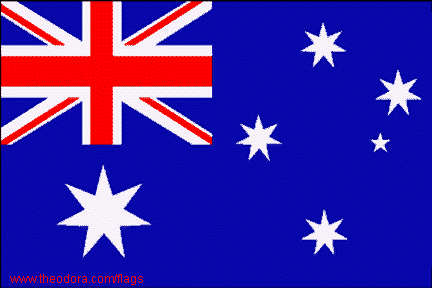Australia...

Stats...
Overview:
Australia has a prosperous Western-style capitalist economy, with a per
capita GDP comparable to levels in industrialized West European
countries. Rich in natural resources, Australia is a major exporter of
agricultural products, minerals, metals, and fossil fuels. Primary products
account for more than 60% of the value of total exports, so that, as in 1983-
84, a downturn in world commodity prices can have a big impact on the
economy. The government is pushing for increased exports of
manufactured goods, but competition in international markets continues
to be severe. Australia has suffered from the low growth and high
unemployment characterizing the OECD countries in the early 1990s. In
1992-93 the economy recovered slowly from the prolonged recession of
1990-91, a major restraining factor being weak world demand for
Australia's exports. Growth picked up so strongly in 1994 that the
government felt the need for fiscal and monetary tightening by yearend.
Australia's GDP grew 6.4% in 1994, largely due to increases in industrial
output and business investment. A severe drought in 1994 is expected to
reduce the value of Australia's net farm production by $825 million in the
twelve months through June 1995, but rising world commodity prices are
likely to boost rural exports by 7.7% to $14.5 billion in 1995/96, according
to government statistics.
Location:
Oceania, continent between the Indian Ocean and the South Pacific Ocean
Map references:
Oceania
Area:
Total Area: 7,686,850 sq km
Land Area: 7,617,930 sq km
Comparative Area: slightly smaller than the US
Capital:
Canberra
National Holiday:
Australia Day, 26 January (1788)
More Australia Facts...
Overview:
Australia has a prosperous Western-style capitalist economy, with a per
capita GDP comparable to levels in industrialized West European
countries. Rich in natural resources, Australia is a major exporter of
agricultural products, minerals, metals, and fossil fuels. Primary products
account for more than 60% of the value of total exports, so that, as in 1983-
84, a downturn in world commodity prices can have a big impact on the
economy. The government is pushing for increased exports of
manufactured goods, but competition in international markets continues
to be severe. Australia has suffered from the low growth and high
unemployment characterizing the OECD countries in the early 1990s. In
1992-93 the economy recovered slowly from the prolonged recession of
1990-91, a major restraining factor being weak world demand for
Australia's exports. Growth picked up so strongly in 1994 that the
government felt the need for fiscal and monetary tightening by yearend.
Australia's GDP grew 6.4% in 1994, largely due to increases in industrial
output and business investment. A severe drought in 1994 is expected to
reduce the value of Australia's net farm production by $825 million in the
twelve months through June 1995, but rising world commodity prices are
likely to boost rural exports by 7.7% to $14.5 billion in 1995/96, according
to government statistics.
Location:
Oceania, continent between the Indian Ocean and the South Pacific Ocean
Map references:
Oceania
Area:
Total Area: 7,686,850 sq km
Land Area: 7,617,930 sq km
Comparative Area: slightly smaller than the US
Capital:
Canberra
National Holiday:
Australia Day, 26 January (1788)
More Australia Facts...